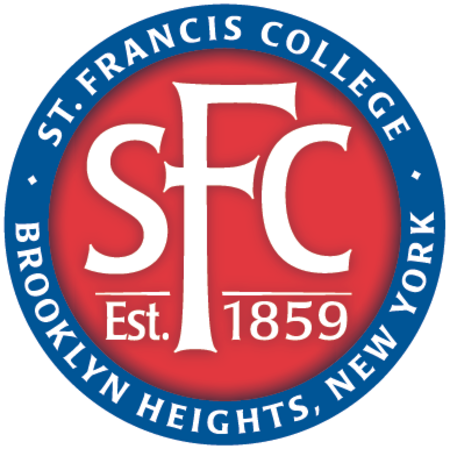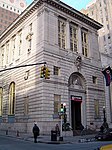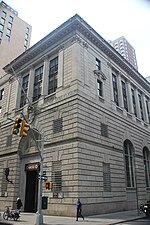St. Francis College

St. Francis College (St. Francis of Brooklyn or SFC) is a private college in Brooklyn Heights, New York. It was founded in 1859 by the Franciscan Brothers of Brooklyn, a Franciscan order, as the St. Francis Academy and was the first private school in the Roman Catholic Diocese of Brooklyn. St. Francis College began as a parochial all-boys academy in the City of Brooklyn and has become a small liberal arts college that has 19 academic departments which offer 72 majors and minors. St. Francis College is a predominantly undergraduate institution with graduate programs in accounting, project management, psychology and creative writing. St. Francis is set in an urban environment and is considered a commuter college. As of 2019, there were 2,323 undergraduates (6% part-time) and 90 graduates (51% part-time).St. Francis College has 21 athletic teams that compete in Division I of the NCAA and are known as the Terriers. SFC's teams participate in the Northeast Conference, with the exception of the men's and women's water polo teams which compete in the CWPA and the MAAC, respectively.
Excerpt from the Wikipedia article St. Francis College (License: CC BY-SA 3.0, Authors, Images).St. Francis College
Joralemon Street, New York Brooklyn
Geographical coordinates (GPS) Address External links Nearby Places Show on map
Geographical coordinates (GPS)
| Latitude | Longitude |
|---|---|
| N 40.693055555556 ° | E -73.991944444444 ° |
Address
Saint Francis College
Joralemon Street
11201 New York, Brooklyn
New York, United States
Open on Google Maps









